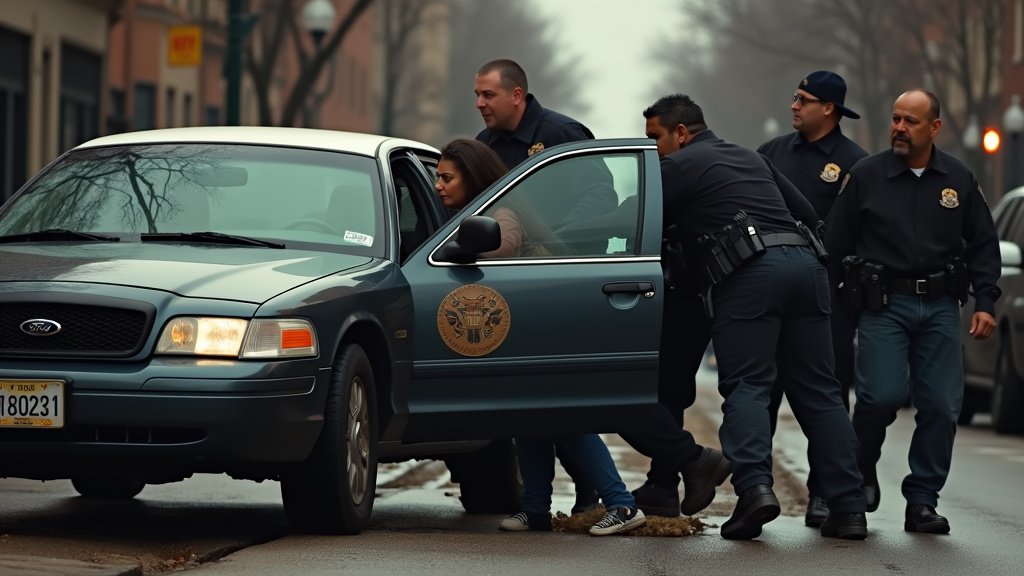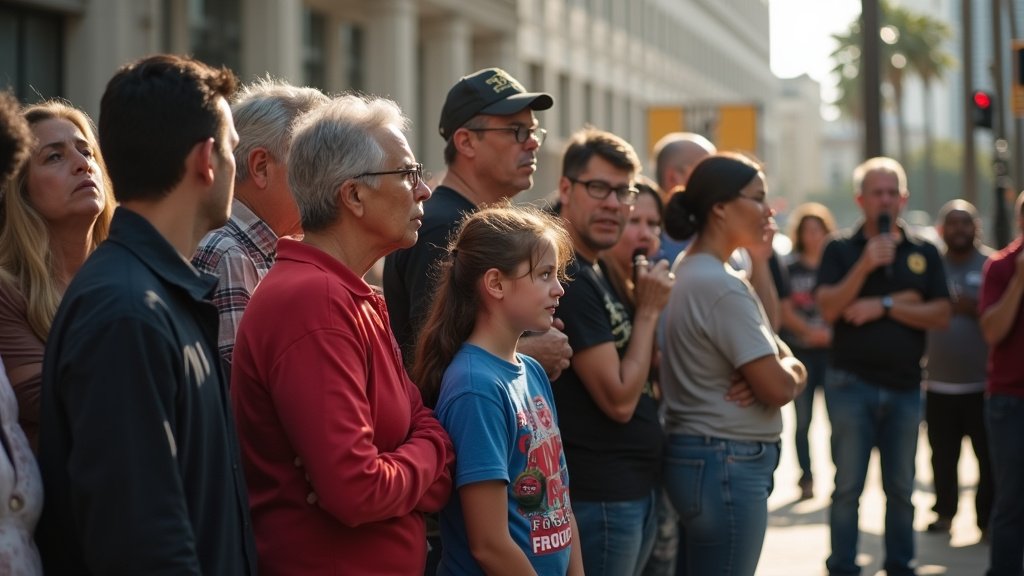ICE Raid Collision: US Citizen Detained After Forceful Encounter During Chicago Immigration Enforcement
A significant incident involving Immigration and Customs Enforcement (ICE) agents has ignited controversy and intensified scrutiny over the agency’s tactics, following an ICE raid collision that resulted in the detainment of a US citizen. On October 10, Dayanne Figueroa, a US citizen, was forcibly removed from her vehicle and pinned to the ground by ICE agents after a collision with their unmarked car. This event unfolded during an immigration enforcement operation in Chicago, reportedly targeting landscaper workers suspected of being in the country without legal documentation.
The ICE Raid Collision and Confrontation Unfolds
Video footage vividly captured the dramatic scene on West Hubbard Street, where ICE agents, some with firearms drawn, converged on Figueroa’s car subsequent to a collision with their unmarked vehicle. Witnesses and Figueroa herself contend that the federal agents’ vehicle initiated the impact. In contrast, the Department of Homeland Security (DHS) asserted that Figueroa collided with their vehicle and offered violent resistance to arrest, leading to injuries sustained by two officers. Despite these DHS claims, Figueroa was released within hours, facing no charges.
The incident commenced amidst an ICE operation aimed at landscaper workers. Local residents, alerted to the presence of immigration agents, began honking their car horns—a familiar signal in certain neighborhoods to warn others about such enforcement actions. As Figueroa navigated through the area, her car was involved in a collision with an unmarked government vehicle occupied by ICE agents who were reportedly withdrawing due to the growing, agitated crowd. This sequence of events highlights the potential for an ICE raid collision in busy urban environments.
Conflicting Accounts of the ICE Raid Collision Emerge
According to numerous accounts, federal agents exited their vehicle with weapons drawn and approached Figueroa’s car. They forcibly opened her door, pulled her out by her legs, and restrained her on the ground before escorting her into a red minivan. Bystanders could be heard exclaiming that the agents had struck her car, with many recording the encounter on their mobile devices. Figueroa, who had recently undergone kidney surgery, reported extreme fear and stated that the video evidence unequivocally showed the agents initiating the collision. She firmly denied being involved in any protest and expressed her intent to seek legal recourse for her treatment during the ICE raid collision.
Conversely, DHS Assistant Secretary Tricia McLaughlin presented a different narrative, alleging that Figueroa used her vehicle to impede agents and struck their unmarked car as they were leaving. McLaughlin further claimed that officers attempted to remove her from the vehicle out of concern for public safety, and that Figueroa “violently resisted, kicking two agents and causing injuries.” This account presents a stark contrast to the events surrounding the ICE raid collision as described by witnesses and Figueroa.
Broader Context: ICE Raids, Chicago Immigration Controversy, and Community Response
This specific incident is not an isolated event and occurs within a wider context of heightened immigration enforcement activities and significant community concern in Chicago and its surrounding areas. Reports suggest that federal agents have been actively involved in numerous operations, occasionally resulting in confrontations with residents and accusations of aggressive immigration enforcement tactics. In certain Chicago neighborhoods, whistles have emerged as a symbol of resistance, employed by residents to alert others to ICE presence and to document enforcement actions.
Moreover, concerns have been raised regarding alleged inhumane conditions at ICE facilities in the Chicago area, including accusations of detainees being denied access to legal counsel and adequate medical care. These deeply felt concerns, combined with incidents such as the one involving Dayanne Figueroa and the resulting ICE raid collision, fuel ongoing debates concerning the methods and accountability of federal immigration enforcement agencies. The news surrounding this event has garnered widespread media attention, underscoring the existing tensions between law enforcement operations and fundamental community rights.
Implications of the ICE Raid Collision and Future Questions
The collision and subsequent detainment of Dayanne Figueroa raise critical questions regarding the appropriate use of force by federal agents, the standard procedures followed during immigration enforcement operations, and the inherent risks of civilian-vehicle collisions during such activities. The fact that Figueroa, a US citizen, was detained and subjected to forceful handling, only to be released without any charges, emphasizes the urgent need for clear communication protocols, effective de-escalation strategies, and stringent oversight mechanisms. This particular ICE raid collision highlights the crucial role of bystander videos in documenting such encounters and shaping public discourse. Investigations into the full details of the encounter, including any potential disciplinary actions, are anticipated, as the community and legal advocates continue to scrutinize ICE and other immigration activities. The ICE raid Chicago event serves as a stark reminder of the complexities involved in immigration enforcement.





